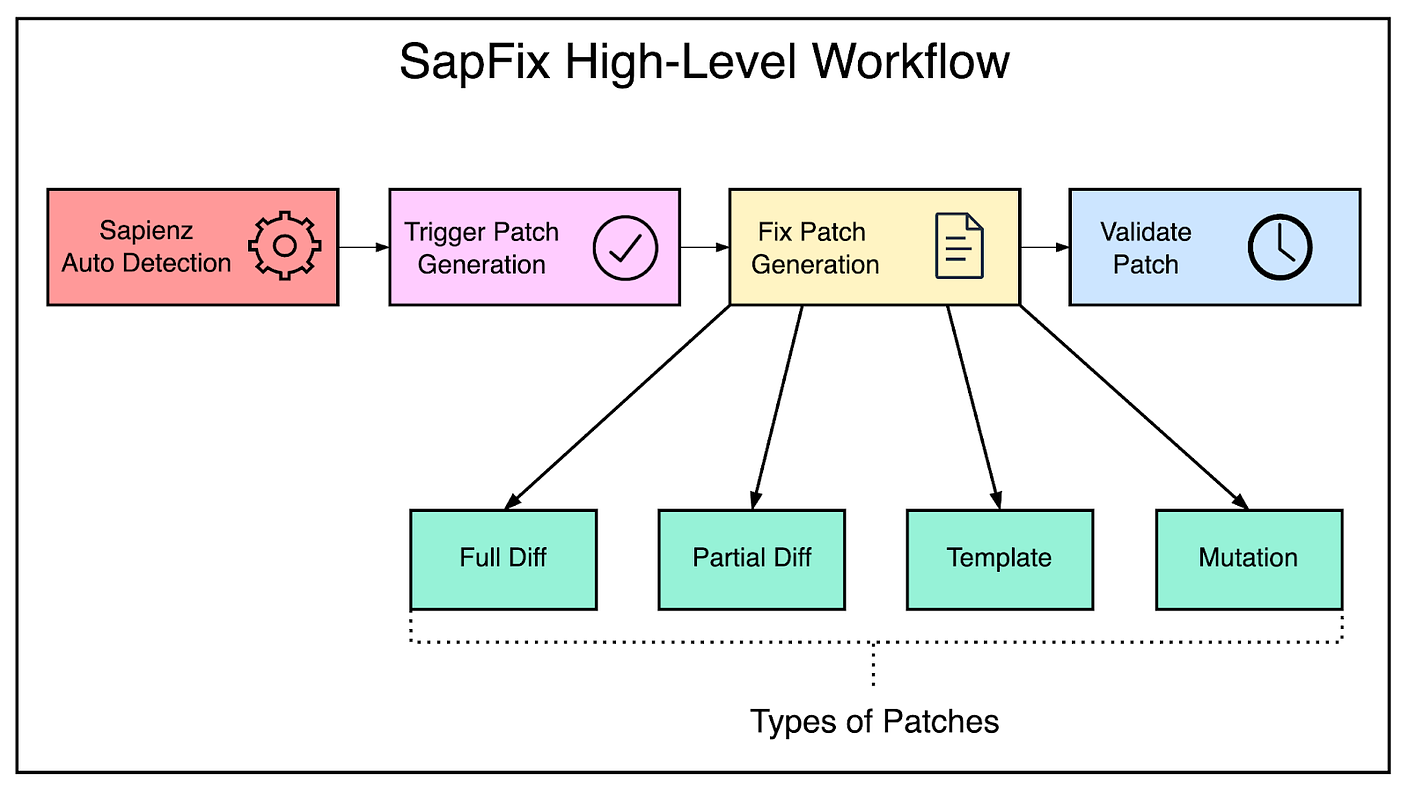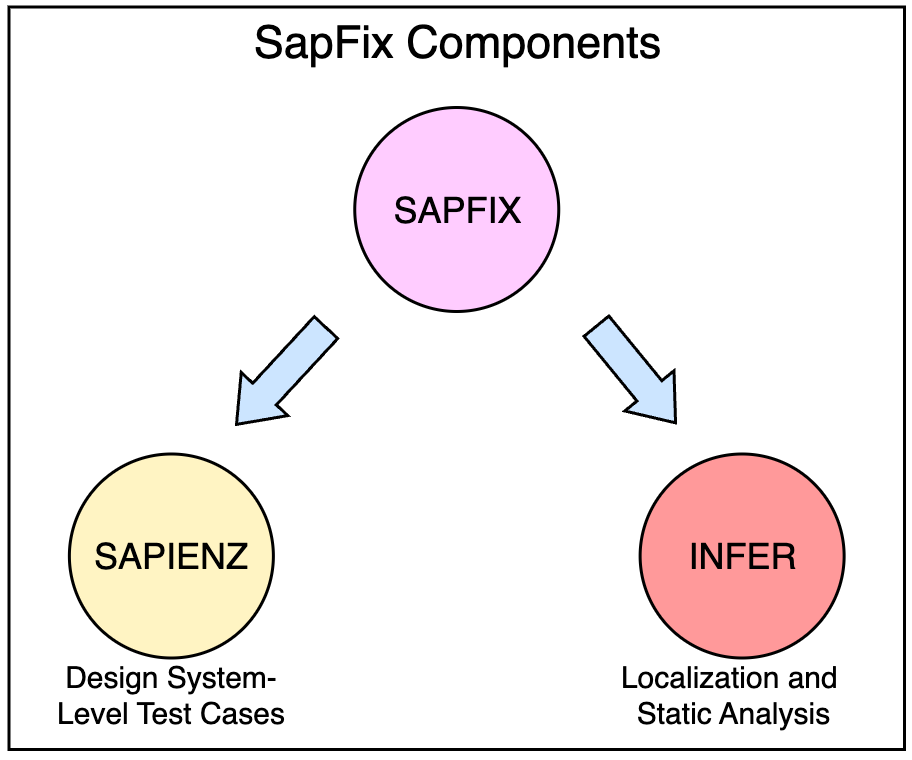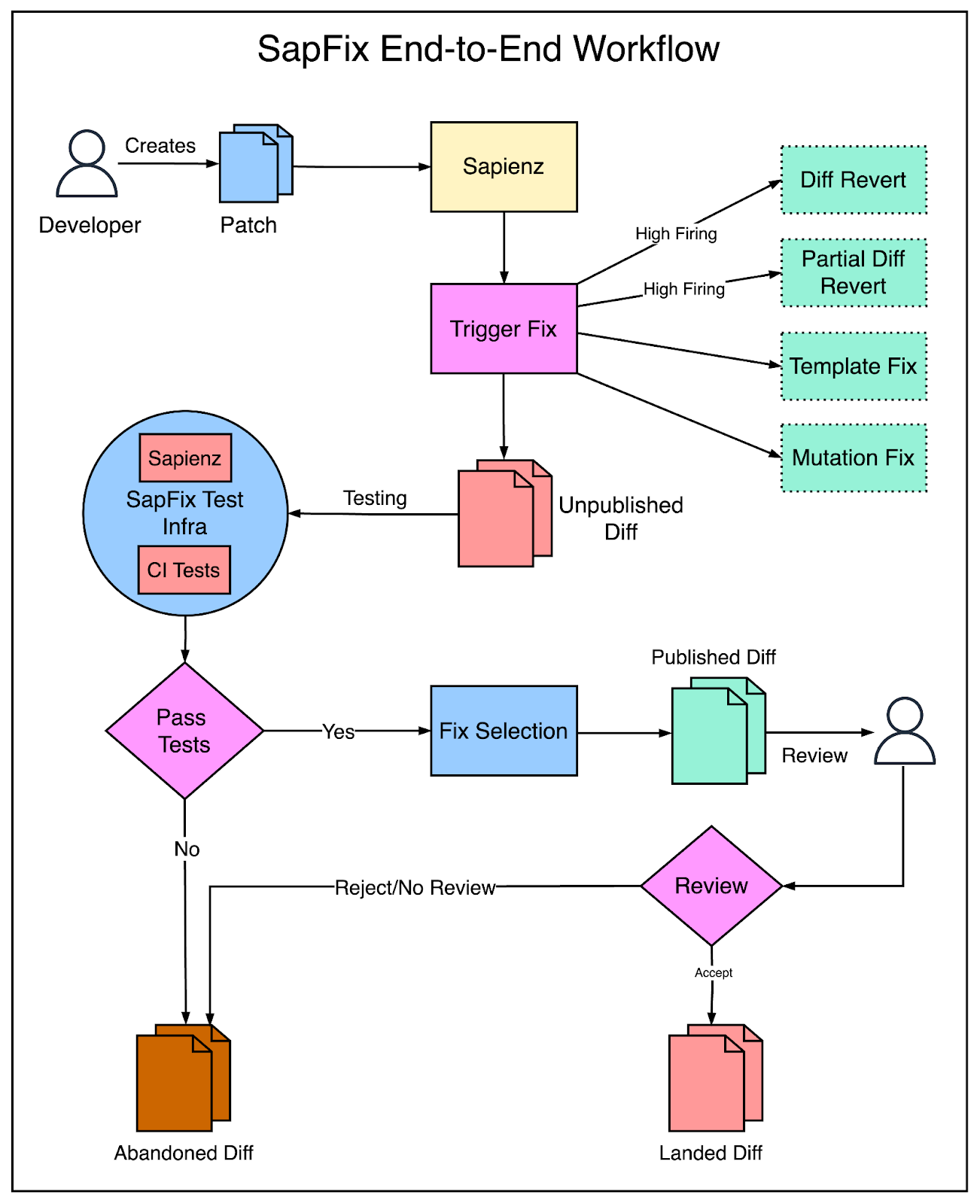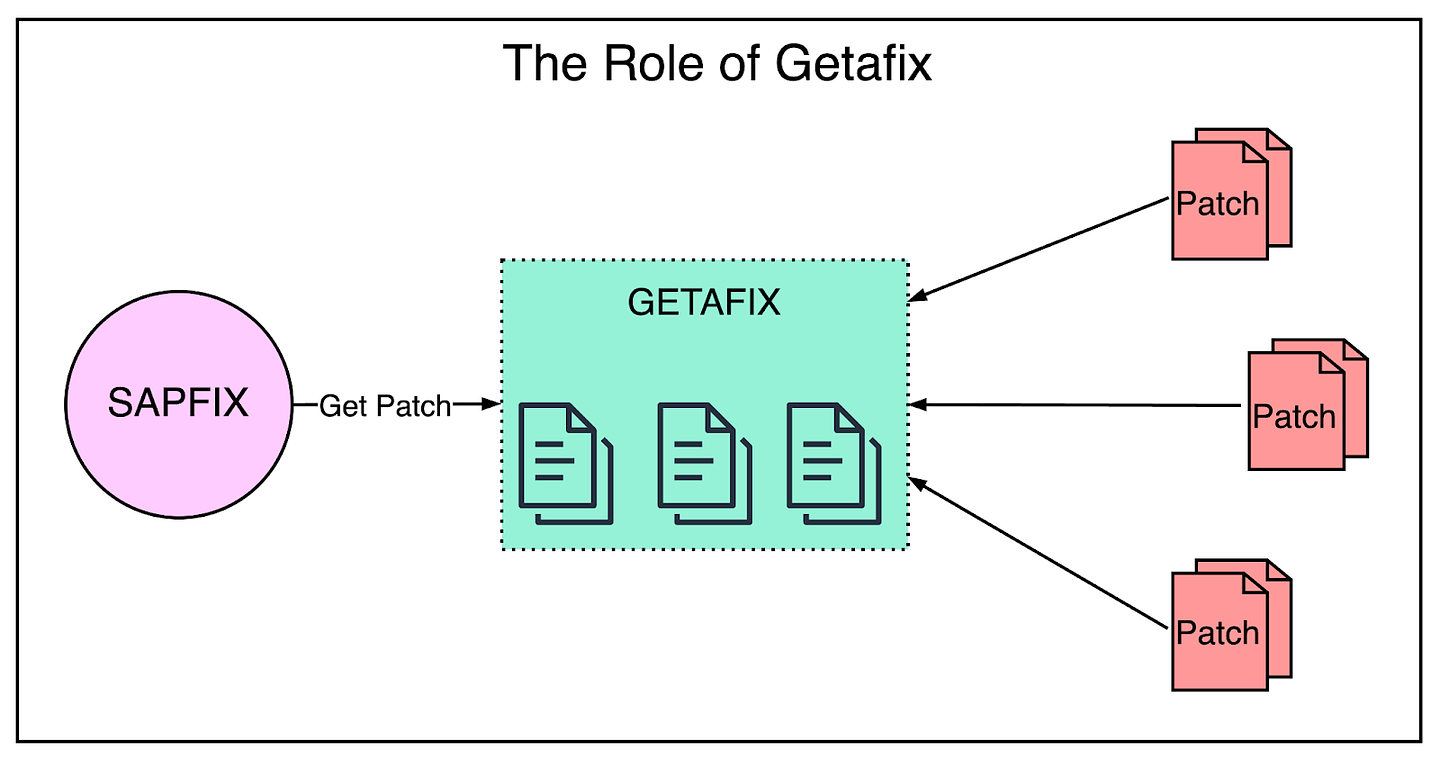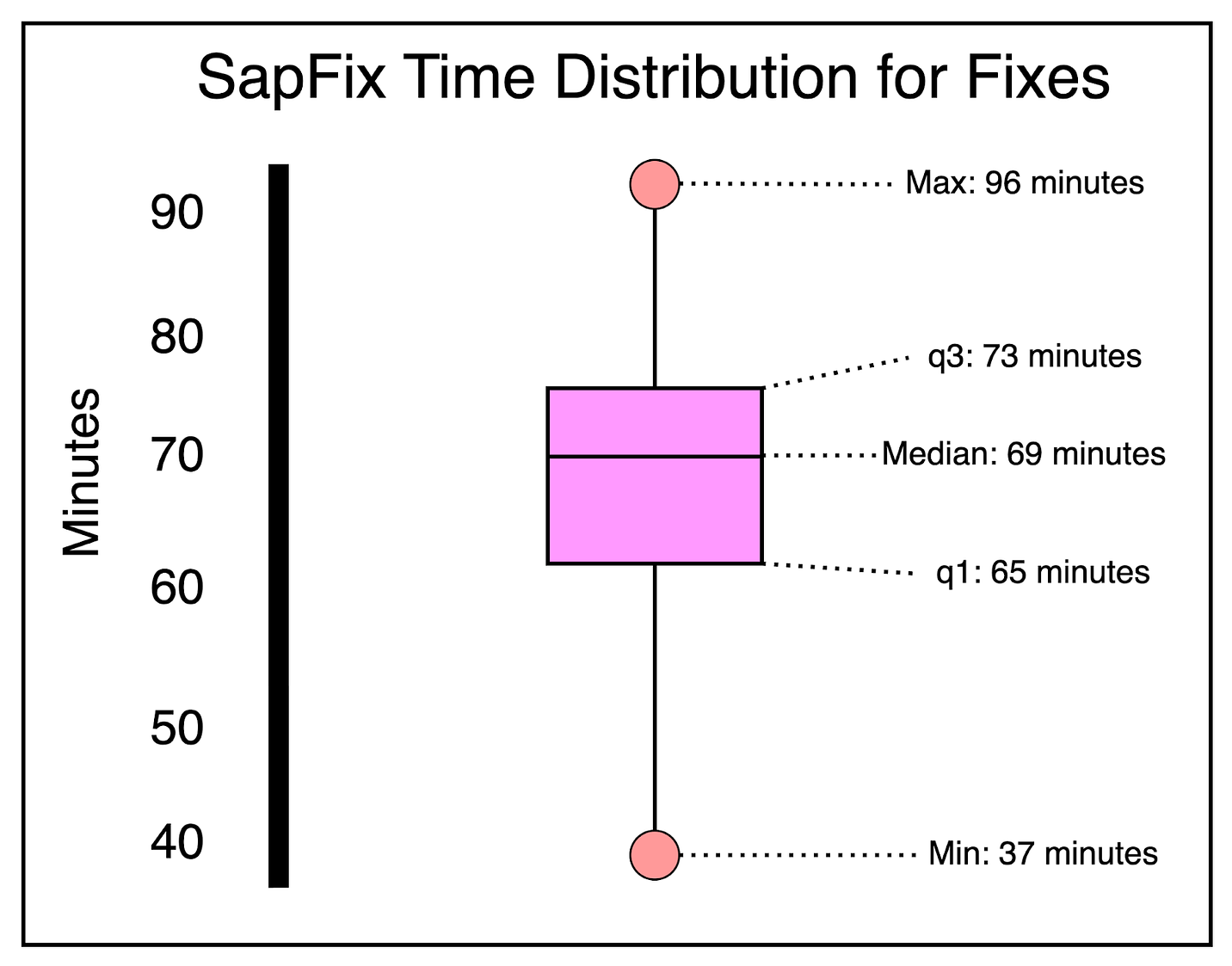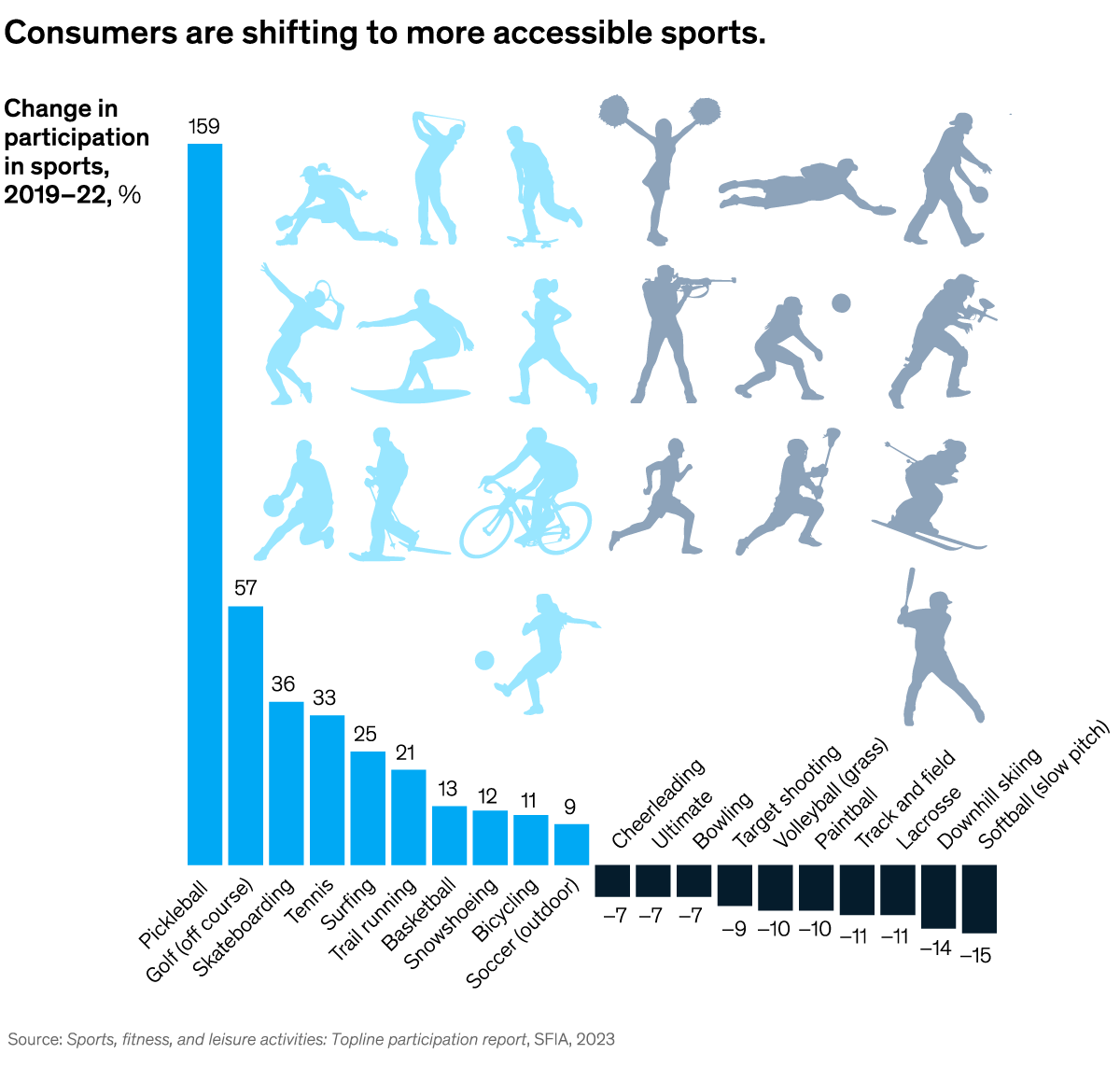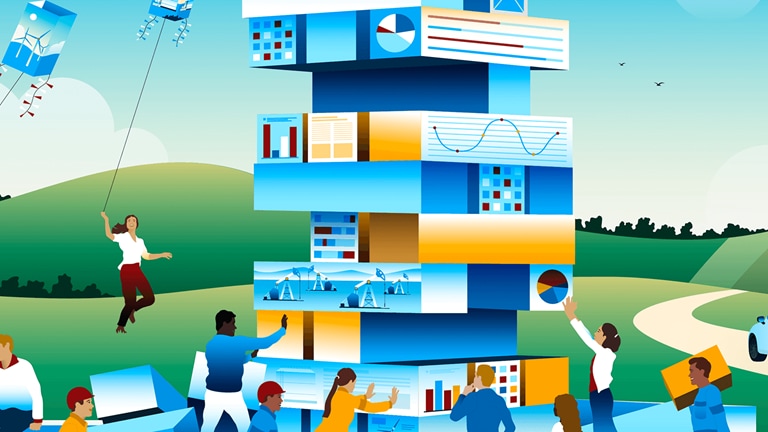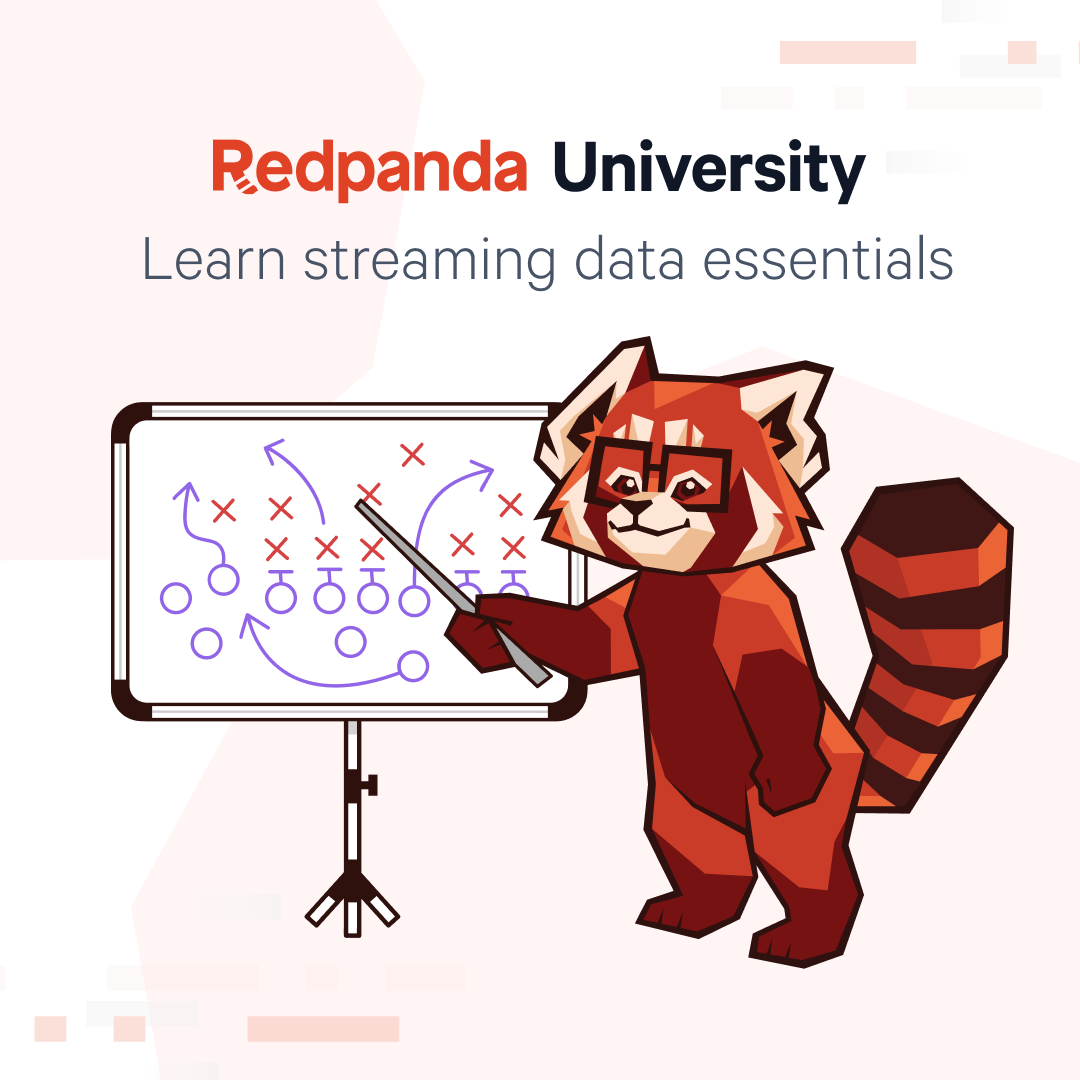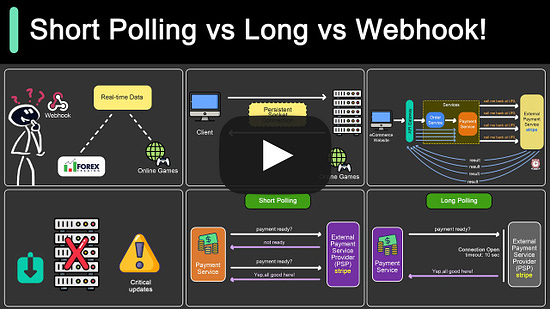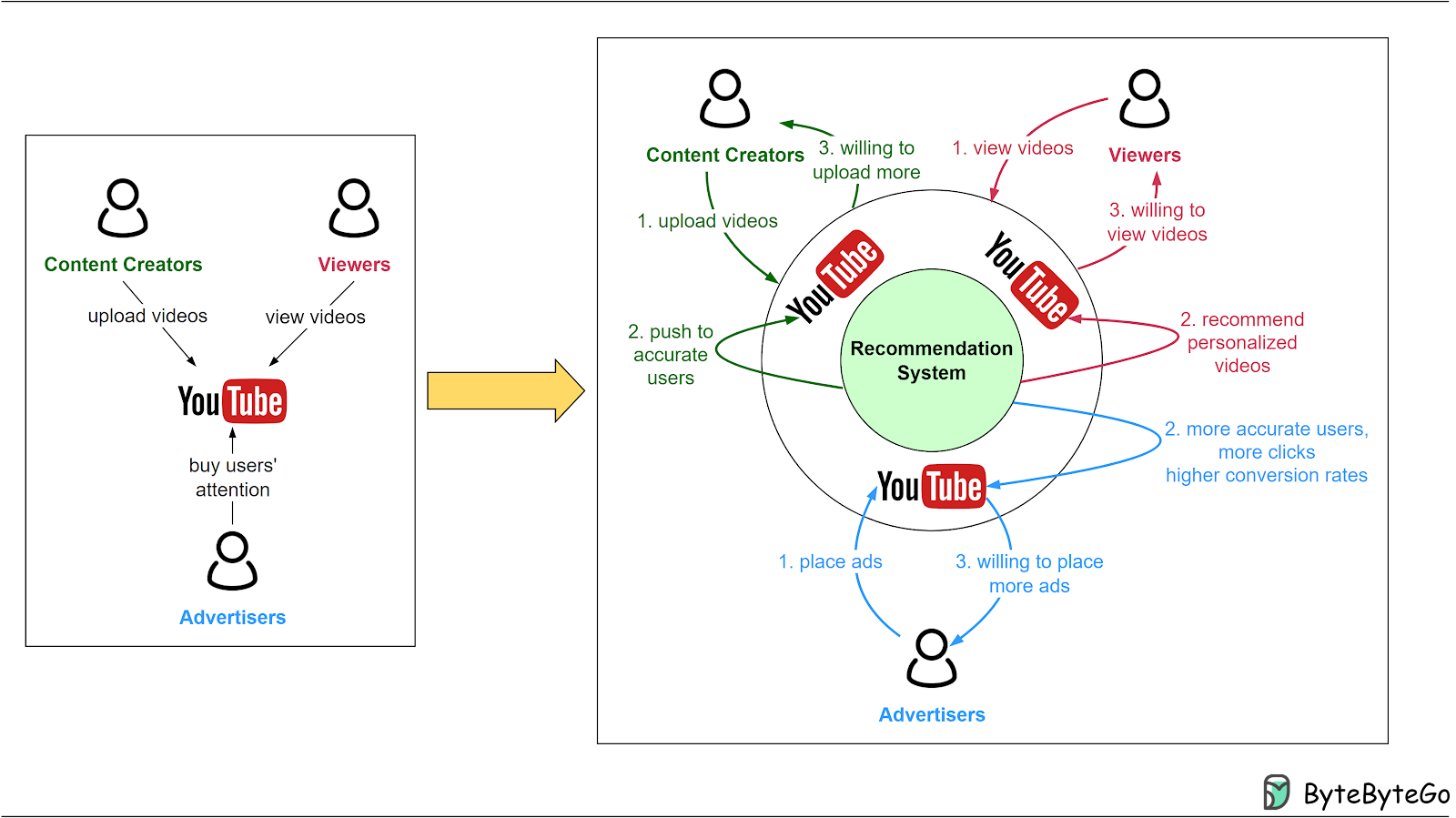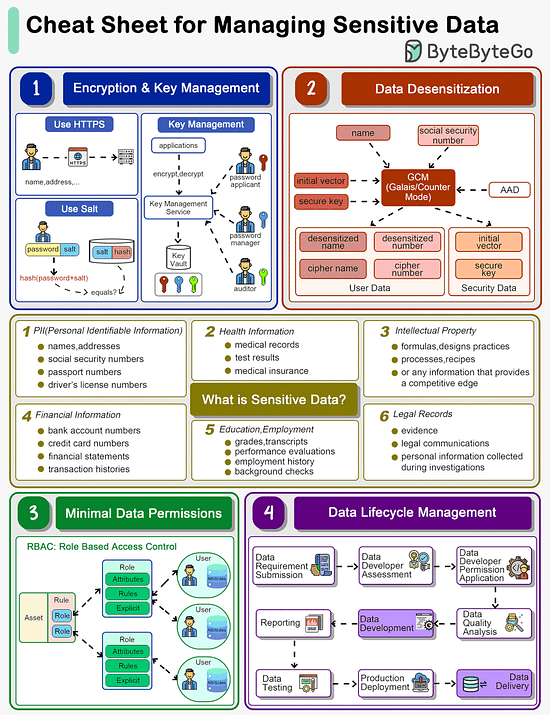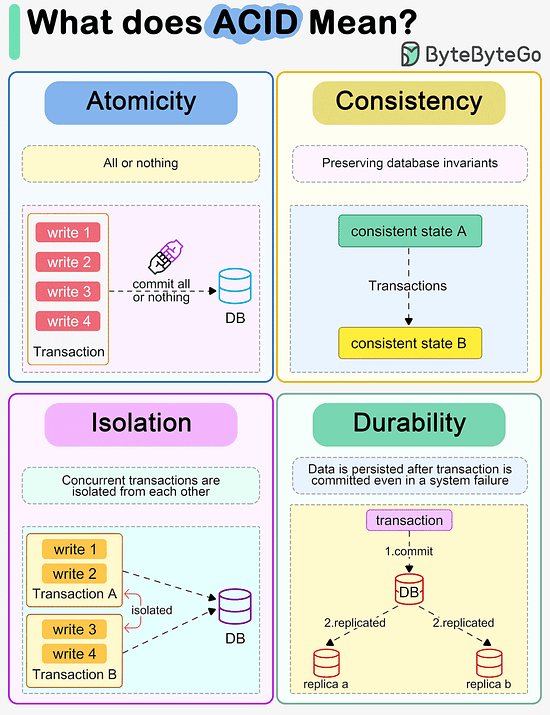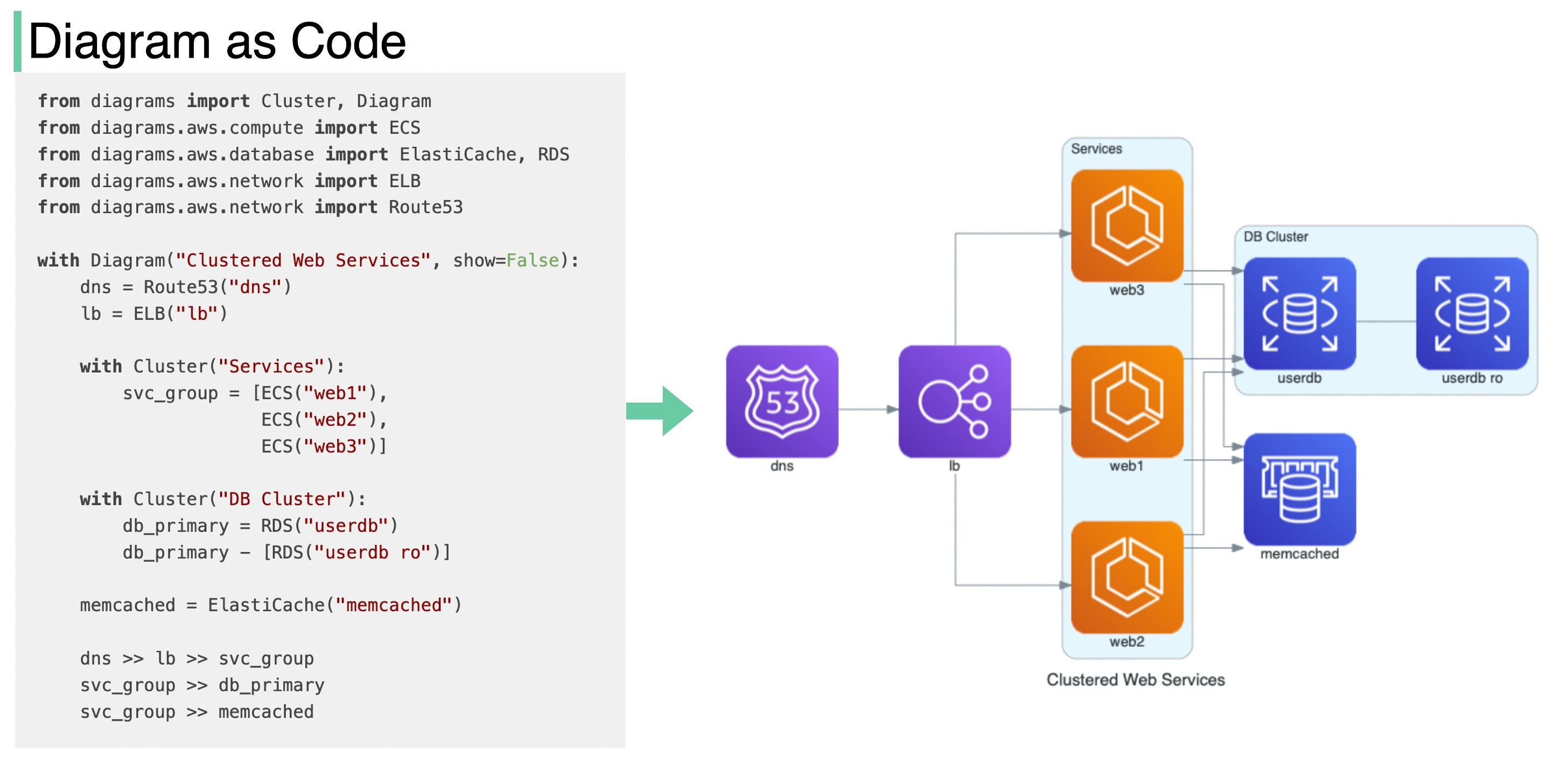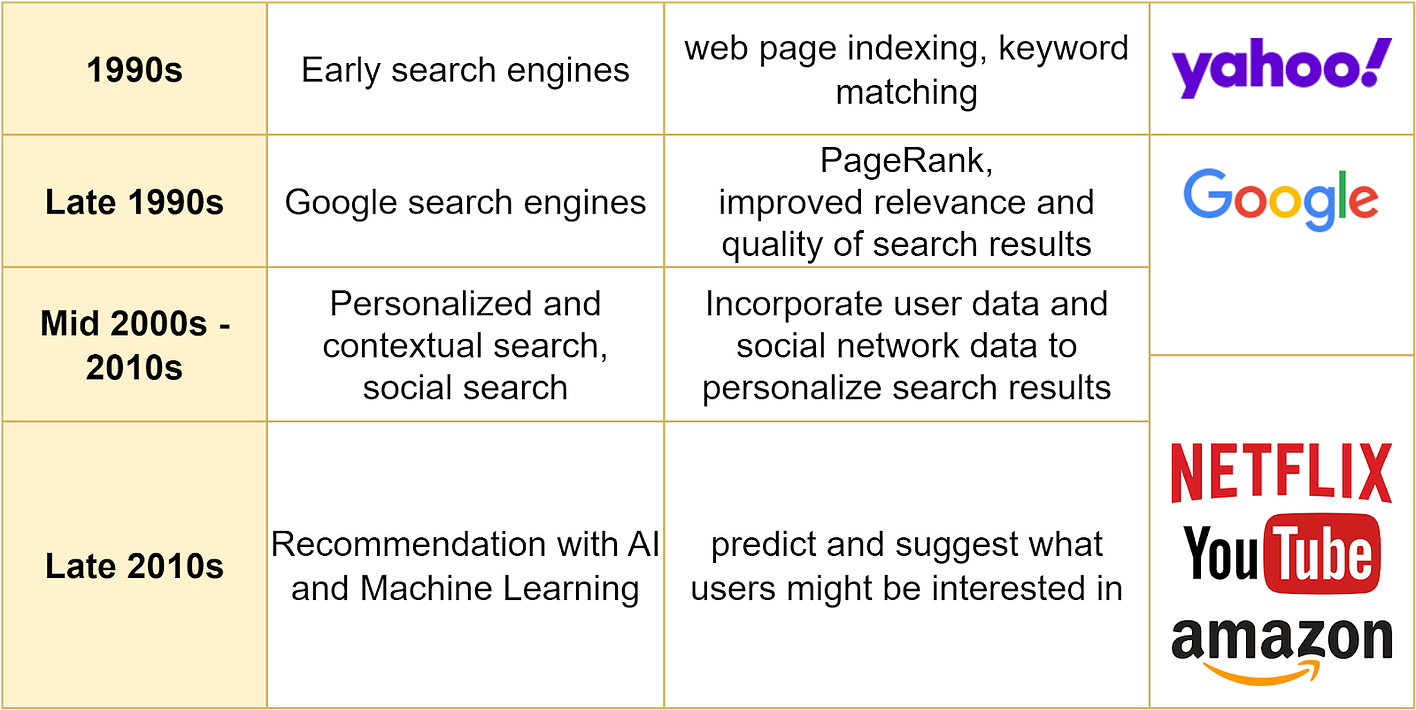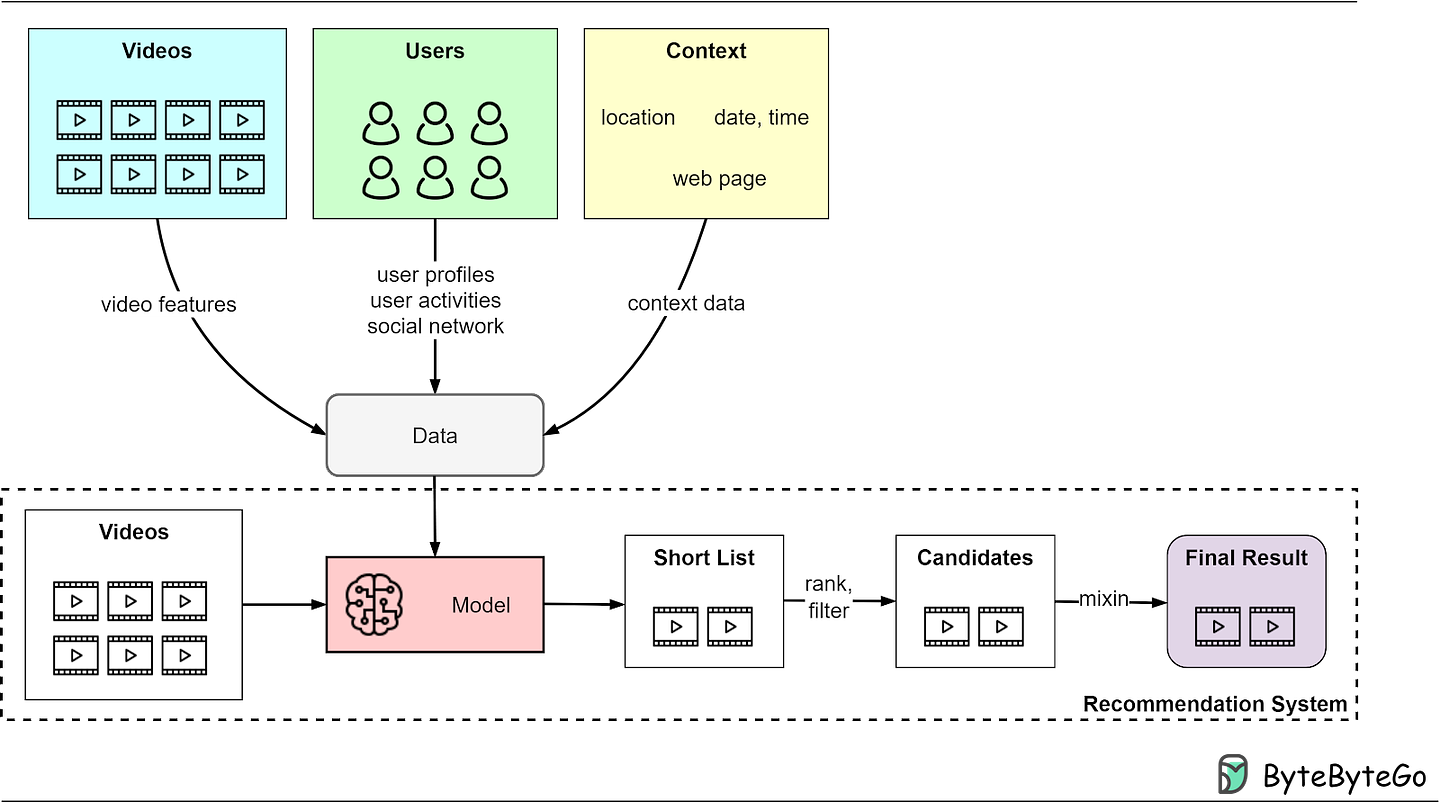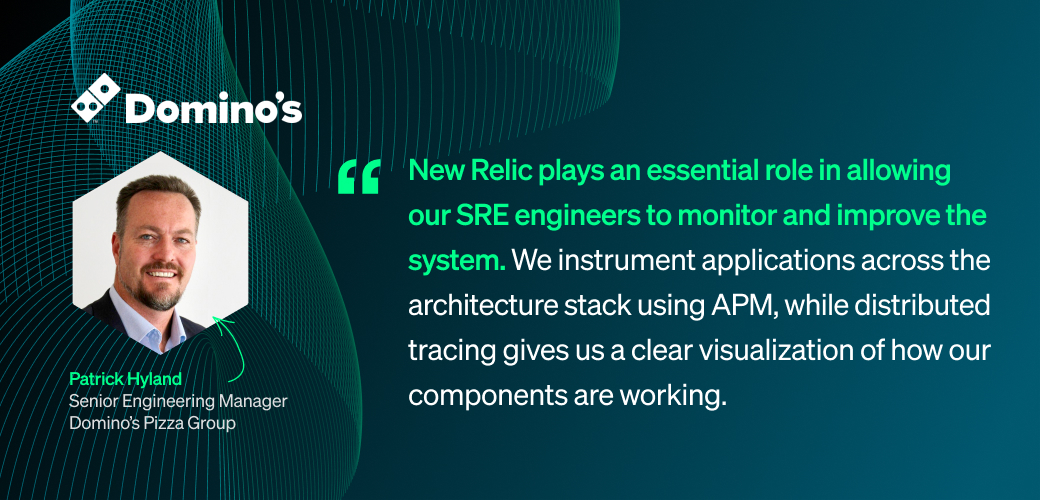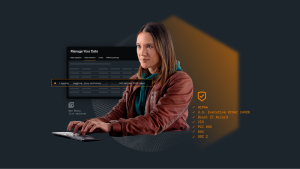Archives
- By thread 5351
-
By date
- June 2021 10
- July 2021 6
- August 2021 20
- September 2021 21
- October 2021 48
- November 2021 40
- December 2021 23
- January 2022 46
- February 2022 80
- March 2022 109
- April 2022 100
- May 2022 97
- June 2022 105
- July 2022 82
- August 2022 95
- September 2022 103
- October 2022 117
- November 2022 115
- December 2022 102
- January 2023 88
- February 2023 90
- March 2023 116
- April 2023 97
- May 2023 159
- June 2023 145
- July 2023 120
- August 2023 90
- September 2023 102
- October 2023 106
- November 2023 100
- December 2023 74
- January 2024 75
- February 2024 75
- March 2024 78
- April 2024 74
- May 2024 108
- June 2024 98
- July 2024 116
- August 2024 134
- September 2024 130
- October 2024 141
- November 2024 171
- December 2024 115
- January 2025 216
- February 2025 140
- March 2025 220
- April 2025 233
- May 2025 239
- June 2025 303
- July 2025 164
-
Automated Bug Fixing at Facebook Scale
Automated Bug Fixing at Facebook Scale
📌Save the Date! Innovate Faster with AI Code Generation (Sponsored) With AI code generation tools developers can accelerate timelines at a pace and cost that would have been unfathomable just years ago. However, code generated by AI can include bugs and errors, and readability, maintainability, and security issues – just like code produced by developers.͏ ͏ ͏ ͏ ͏ ͏ ͏ ͏ ͏ ͏ ͏ ͏ ͏ ͏ ͏ ͏ ͏ ͏ ͏ ͏ ͏ ͏ ͏ ͏ ͏ ͏ ͏ ͏ ͏ ͏ ͏ ͏ ͏ ͏ ͏ ͏ ͏ ͏ ͏ ͏ ͏ ͏ ͏ ͏ ͏ ͏ ͏ ͏ ͏ ͏ ͏ ͏ ͏ ͏ ͏ ͏ ͏ ͏ ͏ ͏ ͏ ͏ ͏ ͏ ͏ ͏ ͏ ͏ ͏ ͏ ͏ ͏ ͏ ͏ ͏ ͏ ͏ ͏ ͏ ͏ ͏ ͏ ͏ ͏ ͏ ͏ ͏ ͏ ͏ ͏ ͏ ͏ ͏ ͏ ͏ ͏ ͏ ͏ ͏ ͏ ͏ ͏ ͏ ͏ ͏ ͏ ͏ ͏ ͏ ͏ ͏ ͏ ͏ ͏ ͏ ͏ ͏ ͏ ͏ ͏ ͏ ͏ ͏ ͏ ͏ ͏ ͏ ͏ ͏ ͏ ͏ ͏ ͏ ͏ ͏ ͏ ͏ ͏ ͏ ͏ ͏ ͏ ͏ ͏ ͏ ͏ ͏ ͏ ͏ ͏ ͏ ͏ ͏ ͏ ͏ ͏ ͏ ͏ ͏ ͏ ͏ ͏ ͏ ͏ ͏ ͏ ͏ ͏ ͏ ͏ ͏ ͏ ͏ ͏ ͏ ͏ ͏ ͏ ͏ ͏ ͏ ͏ ͏ ͏ ͏ ͏ ͏ ͏ ͏ ͏ ͏ ͏ ͏ ͏ ͏ ͏ ͏ ͏ ͏ ͏ Forwarded this email? Subscribe here for more📌Save the Date! Innovate Faster with AI Code Generation (Sponsored)
With AI code generation tools developers can accelerate timelines at a pace and cost that would have been unfathomable just years ago. However, code generated by AI can include bugs and errors, and readability, maintainability, and security issues – just like code produced by developers.
Join Manish Kapur, Sr. Director, Product & Solution at Sonar, for “Code Faster, Write Cleaner using AI Coding Assistants and Sonar” on Wednesday, March 20th to dive into the world of AI-assisted coding! Attendees will learn best practices for integrating AI coding assistants into their development workflows as well as practical advice to nurture a culture of clean code.
If there’s one thing that a majority of developers truly hate, it’s debugging.
While debugging small programs isn’t fun, it can get incredibly irritating when you have to debug millions of lines of code on a Friday evening to find that elusive bug.
To make things worse, bugs (software or otherwise) are tenacious.
You get rid of one and two more show up. Just when you think you’ve finally fixed the issue and started testing things out, you realize that the patch you just made is causing another crash some other place within those million lines.
Before you know it, you are trudging your way through another bug hunt.
This is where SapFix projects itself as a game-changing tool in the field of automated bug fixing.
It’s a new AI hybrid tool created by Facebook with the goal of reducing the time engineers spend on debugging.
SapFix makes debugging easy by automatically generating fixes for specific issues and proposing those fixes to engineers for approval and deployment to production.
The below diagram shows the SapFix workflow at a high level. In a later section, we will see the entire process in even more detail.
It would be an understatement to say that SapFix has shown promise. Here are some facts worth considering:
SapFix has been used to suggest fixes for six key Android apps in the Facebook App family.
The apps are Facebook, Messenger, Instagram, FBLite, Workplace and Workchat.
Together, these apps consist of tens of millions of lines of code and are used daily by hundreds of millions of users worldwide.
If you think about it, those are 6 multi-million line code-bases and it’s still early development days for SapFix!
At this point, you might wonder how SapFix is able to generate fixes for so many diverse apps with wildly different uses ranging from communication to social media to building communities.
The Role of Sapienz and Infer
The secret sauce of SapFix is the adoption of automated program repair techniques.
These techniques are based on algorithms to identify, analyze and patch known software bugs without human intervention. One of the widely used approaches relies on software testing to direct the repair process.
This is where Facebook leverages its automated test case design system known as Sapienz.
Sapienz uses Search-based Software Engineering (SBSE) to automatically design system-level test cases for mobile apps. Executing those test cases allows Sapienz to find 100s of crashes per month even before they can be discovered by Facebook’s internal human testers.
Think of SBSE as having a super smart helper that looks through all the lines of code and tries different combinations to fix a problem. It's a lot like when you try different pieces of a puzzle until they fit just right.
As an estimate, Facebook’s engineers have been able to fix 75% of crashes reported by Sapienz. This indicates a very high signal-to-noise ratio for bug reports generated by Sapienz.
However, to improve this figure even further, Facebook also uses Infer.
Infer is an open-source tool that helps with localization and static analysis of the fixes proposed. Like Sapienz, Infer is also deployed directly onto Facebook’s internal continuous integration system and has access to the majority of Facebook’s code base.
Sapienz and Infer collaborate with each other to provide information to developers about potential bugs such as:
Localization of the likely root cause
The failing test scenario that helped identify the bug
However, Sapienz and Infer can only provide information and not save the developer’s time in actually fixing the issue. Sure, their collaboration helps identify bugs and their location within the code, but most of the work involved in fixing these bugs still falls to a developer.
This is where SapFix comes along and combines three important components to provide an end-to-end automated repair system:
Mutation-based technique supported by patterns generated from previous human fixes
The automated test design of Sapienz
Infer’s static analysis and localization infrastructure
From picking the test cases that detect the crash to fixing the issue and re-testing, SapFix takes care of the entire process as part of Facebook’s continuous integration and deployment system.
Latest articles
If you’re not a paid subscriber, here’s what you missed last month.
1. How Video Recommendations Work - Part 1
3. How do We Design for High Availability?
5. Mastering Design Principles - SOLID
To receive all the full articles and support ByteByteGo, consider subscribing:
The SapFix Workflow
How does SapFix actually work?
There are four types of fixes that are performed by SapFix:
Template Fix
Mutation Fix
Diff Revert
Partial Diff Revert
Below is a diagram that shows the entire workflow of how SapFix handles the process of fixing an issue based on these types.
At its core, the process is extremely simple to understand.
The fix creation process receives the below input:
The buggy revision and the blamed file that contains the crash location
The blamed line where the crash is supposed to be happening
Stack trace of the crash
The unique id of the crash
Author of the buggy revision (the developer who made the Diff)
Buggy expressions provided by Infer (this is null when Infer data isn’t available)
Based on this input, SapFix goes ahead and generates a list of revisions that can fix the crash. This list is created after SapFix has tested those revisions thoroughly.
From the input to output, there are several steps involved:
Developers submit changes (called ‘Diffs’) to be reviewed using Phabricator (Facebook’s continuous integration system)
SapFix uses Sapienz to select a few test cases to execute on each Diff submitted for review.
When Sapienz pinpoints a specific crash to the given Diff, SapFix establishes the priority of fix types (template, mutation, revert, etc).
SapFix proceeds to try and generate multiple potential fixes per bug and then evaluates their quality.
To do so, it runs existing, developer-written tests along with tests created by Sapienz on the patched builds. This validation process is autonomous and isolated from the larger codebase.
In essence, SapFix is kind of debugging the codebase just like developers currently do. Think of the puzzle-solving approach we talked about earlier. However, unlike developers, SapFix cannot deploy the fix to production on its own.
Once the patches are tested, SapFix selects one of the candidate patches and requests a human reviewer to review the change through the Phabricator Code Review system. The reviewer is chosen to be the software engineer who actually submitted the Diff that SapFix attempted to fix.
This is the engineer who most likely has the best technical context to evaluate the patch. However, other relevant engineers are also subscribed to each Diff based on Facebook’s code review standards. What this means is that all Diffs proposed by SapFix are guaranteed to have at least one qualified human reviewer.
The above flow may appear simple, but there are some additional nuances to it, and understanding those makes things clearer.
Template Fix and Mutation Fix
As the name suggests, the template fix and mutation fix strategies choose between template and mutation-based fixes.
Template-based fixes are favored when all other parameters are equal.
But where do these templates come from?
Template fixes come from another tool known as Getafix that generates patches similar to the ones human developers produced in the past. From the perspective of SapFix, Getafix is a black box that contains a bunch of template fix patterns harvested from previous successful fixes.
As far as the mutation fix strategy is concerned, SapFix currently only supports fixing Null Pointer Exception (NPE) crashes. Though Facebook has a plan to cover more mutation strategies, just focusing on NPE has also provided a good amount of success.
High Firing Crashes
If neither template-based nor mutation-based strategies produce a patch that passes all tests, SapFix attempts to revert Diffs that result in high-firing crashes.
High-firing crash is a software bug that occurs frequently or affects a large number of users.
There are a couple of reasons for reverting the diff instead of trying to patch:
High-firing crashes can block Sapienz and other testing technologies. Therefore, it’s important to delete or revert them from the master build as soon as possible.
High-firing bugs have a higher potential impact on the stability and reliability of the application.
The revert strategies (full and partial) basically delete the change made in the Diff. In practice, reverting can mean deletion, addition, or replacement of code in the current version of the system.
Between the two types of revert strategies, SapFix generally prefers full diff revert because partial diff revert has a higher probability of knock-on adverse effects.
However, new Diffs are generated every few seconds and full diff reverts can also fail due to merge conflicts with other revisions. In those cases, SapFix attempts to go for partial diff revert since the changes produced are smaller and less prone to merge conflicts.
SapFix Adoption Results
Over a period of 3 months, after SapFix was adopted, it tackled 57 crashes related to Null-Pointer Exceptions (NPE).
To handle these crashes, 165 patches were created (roughly half from template and half from mutation-based repair). Out of these 165 patches, 131 were correctly built and passed all tests. Finally, 55 were reported to the developers.
Also, initial reactions from the developers were quite positive. When going through the very first SapFix-proposed patch, the developers had the feeling of “living in the future”.
However, the time taken to generate a fix presented a slightly different issue.
The median time from fault detection to publishing a fix to the developer came out to be 69 minutes. The worst case was approximately 1.5 hours and the fastest one was 37 minutes after the crash was first detected.
As you can also see, the overall range of observed values is pretty wide.
The main reason for this is the computational complexity of fixing an issue and the variation in workloads on the CI/CD system.
Since SapFix is deployed in a highly parallel, asynchronous environment, the time from detection to publication is influenced by the current demand on the system and the availability of computing resources.
Lessons Learned from SapFix
Facebook’s main philosophy behind SapFix was to focus on the industrial deployment of an automated repair system rather than academic research. Therefore, most of the decisions were focused on this goal.
Though much remains to be done, Facebook also learned a lot of lessons from SapFix that they have shared.
Here are a few important ones:
End-to-end automated repair can work at an industrial scale
The role of developers as the final gatekeeper is critical to the success of SapFix. There is still a lot of work required to have automated oracles.
Reverting of diffs is useful for high-firing crashes in the master build of the system
SapFix works best with newly arising failures or crashes. With pre-existing crashes, the relevancy is reduced because the developer reviewing the patch may not have a sufficient overview of the code.
Developer sociology is important to take into account. Despite SapFix providing ready-to-use patches, the developers may still prefer to clone and own the changes instead of simply landing the patches suggested by SapFix.
Developers showed a good amount of interest in interacting with the SapFix bot.
SapFix focuses more on removing the symptom rather than addressing the root cause. This needs more work in terms of identifying the root cause of failures and trying to fix them.
References:
SPONSOR US
Get your product in front of more than 500,000 tech professionals.
Our newsletter puts your products and services directly in front of an audience that matters - hundreds of thousands of engineering leaders and senior engineers - who have influence over significant tech decisions and big purchases.
Space Fills Up Fast - Reserve Today
Ad spots typically sell out about 4 weeks in advance. To ensure your ad reaches this influential audience, reserve your space now by emailing hi@bytebytego.com.
Like
Comment
Restack
© 2024 ByteByteGo
548 Market Street PMB 72296, San Francisco, CA 94104
Unsubscribe
by "ByteByteGo" <bytebytego@substack.com> - 11:40 - 5 Mar 2024 -
Oops, we we made a mistake! Sorry about that.
Oops, we we made a mistake! Sorry about that.
Hi MD,
We we made a mistake!
We mistakenly sent out an email stating that our webinar, ASYNC Power Hour: Asynchronous Work in Action and Its Impact on Global Teams, is now live. However, our eager email system jumped the gun a bit. The webinar is actually scheduled to go live at 9am UTC on March 6th.
We apologize for any confusion this may have caused and hope you can join us for the webinar then.
Don't forget to grab our interactive Notion agenda while attending the webinar. It's filled with useful information, additional resources, and links to the tools and details discussed during the webinar. You can access the agenda here.
The HR platform for global businesses
Remote makes running global teams simple. Hire, manage, and pay anyone, anywhere.




You received this email because you are subscribed to News & Offers from Remote Europe Holding B.V
Update your email preferences to choose the types of emails you receive.
Unsubscribe from all future emailsRemote Europe Holding B.V
Copyright © 2024 All rights reserved.
Kraijenhoffstraat 137A 1018RG Amsterdam The Netherlands
by "Remote" <hello@remote-comms.com> - 04:51 - 5 Mar 2024 -
A road map to growth for Indian enterprises
On Point
Debunking 4 myths about growth Brought to you by Liz Hilton Segel, chief client officer and managing partner, global industry practices, & Homayoun Hatami, managing partner, global client capabilities
— Edited by Belinda Yu, editor, Atlanta
This email contains information about McKinsey's research, insights, services, or events. By opening our emails or clicking on links, you agree to our use of cookies and web tracking technology. For more information on how we use and protect your information, please review our privacy policy.
You received this newsletter because you subscribed to the Only McKinsey newsletter, formerly called On Point.
Copyright © 2024 | McKinsey & Company, 3 World Trade Center, 175 Greenwich Street, New York, NY 10007
by "Only McKinsey" <publishing@email.mckinsey.com> - 01:25 - 5 Mar 2024 -
🚀 Our ASYNC Power Hour webinar is now live. Tune in.
🚀 Our ASYNC Power Hour webinar is now live. Tune in.
Hi MD,
Great news! 🎉 The "ASYNC Power Hour: Asynchronous Work in Action and Its Impact on Global Teams" is now live!
This webinar is your gateway to mastering async work dynamics 💼, featuring our CEO, Job van der Voort and other Remote leaders from around the world, as they share the blueprint for Remote's global async success.
Don't forget to grab our interactive Notion agenda while attending the webinar. It's filled with useful information, additional resources, and links to the tools and details discussed during the webinar. You can access the agenda here.
The HR platform for global businesses
Remote makes running global teams simple. Hire, manage, and pay anyone, anywhere.




You received this email because you are subscribed to News & Offers from Remote Europe Holding B.V
Update your email preferences to choose the types of emails you receive.
Unsubscribe from all future emailsRemote Europe Holding B.V
Copyright © 2024 All rights reserved.
Kraijenhoffstraat 137A 1018RG Amsterdam The Netherlands
by "Remote" <hello@remote-comms.com> - 12:00 - 5 Mar 2024 -
The rising tide of M&A: A leader’s guide
Let’s make a deal Brought to you by Liz Hilton Segel, chief client officer and managing partner, global industry practices, & Homayoun Hatami, managing partner, global client capabilities
Mergers and acquisitions, when executed well, are one of the most critical tools companies can use to create value. But they’re not always the most popular path to growth. This was certainly true in 2023, a tough year for M&A by many measures. Yet hope springs eternal, thanks to a late-in-the-year rebound in deal activity and continued confirmation that programmatic acquirers (companies that pursue multiple small or midsize acquisitions every year) outperform their competition. This week, we look at the reasons why M&A might matter now more than ever and the ways that companies can prepare for their next deal.
It’s been a volatile few years for the M&A market, which was in a bona fide slump in 2023. While the S&P 500 rose by 24 percent, global deal value and volume were both lower than in the pandemic year of 2020. Despite the glum statistics, McKinsey senior partners Jake Henry and Mieke Van Oostende are optimistic about M&A’s prospects. In their 2024 M&A activity report, they predict a growing appetite for deals due to a few factors: amid major changes in the business environment, M&A is strategically essential to competitiveness; macroeconomic concerns, such as inflation, are tempering; and many investors have a healthy amount of cash on hand. While the M&A opportunity varies by industry and region, the report points to steps that all companies can take to prepare for a potential groundswell of transactions. Among them: reevaluating the company’s M&A themes and strategies (divestitures included) that are most relevant to the business, investing in the capabilities and assets that will support future portfolio changes, and pursuing partnerships and alternative deal types, such as joint ventures, to mitigate potential risks and financing issues.
That’s how much money the world’s 2,000 largest companies (or the “Global 2000”) spent on deals in the past decade. With the right M&A blueprint and capabilities, the payoff from transactions can be huge. Yet even with so much value at stake, McKinsey’s Ignacio Fantaguzzi and Christopher Handscomb say that one important M&A capability, culture, is often overlooked. “Differences in cultures can exist at any level and can seriously disrupt operations and jeopardize integration,” they say. “Companies may differ in their cultures around decision making—one may have a top-down, directive culture while the other’s is consultative and process-driven.” To practice effective culture management, it’s important for organizations to recognize the differences in how work gets done, decide on a future culture for the integrated company, and develop a change story that will inspire the new culture (and related behavioral changes) to take root.
That’s McKinsey’s Jeff Rudnicki and colleagues on the virtues of a “healthy” corporate culture in large M&A deals, or transactions in which the deal is worth at least 30 percent of the acquirer’s market capitalization. While the odds for success in large deals are essentially a coin toss, Rudnicki and coauthors explain that a few traits of organizationally healthy acquirers help give these companies a competitive edge: they are rigorous in their selection and management of talent, focused on the deal’s value proposition (and actively communicate that to stakeholders), and disciplined in their process of integrating a target.
Long-running McKinsey research continues to demonstrate the value of a programmatic approach to M&A, in which dealmaking is treated as a continuous process, rather than an event, that requires a robust set of capabilities. Not only does a programmatic M&A strategy yield consistently better returns than all other approaches to transactions, but it can also be instrumental in boosting a company’s resilience. “To develop that muscle, you need to think about M&A holistically, starting with a link to strategy,” says McKinsey’s Patrick McCurdy in a recent episode of the Inside the Strategy Room podcast with Tobias Lundberg, Jeff Rudnicki, and Joanna Stone Herman, a partner at M&A advisory firm Oaklins DeSilva & Phillips. McCurdy and colleagues also identify what they call “the three Cs”—competitive advantage, conviction, and capacity—which can enable programmatic acquirers to continue pursuing deals, and finding success, even through a downturn.
Lead by doing your due diligence.
– Edited by Daniella Seiler, executive editor, Washington, DC
Share these insights
Did you enjoy this newsletter? Forward it to colleagues and friends so they can subscribe too. Was this issue forwarded to you? Sign up for it and sample our 40+ other free email subscriptions here.
This email contains information about McKinsey’s research, insights, services, or events. By opening our emails or clicking on links, you agree to our use of cookies and web tracking technology. For more information on how we use and protect your information, please review our privacy policy.
You received this email because you subscribed to the Leading Off newsletter.
Copyright © 2024 | McKinsey & Company, 3 World Trade Center, 175 Greenwich Street, New York, NY 10007
by "McKinsey Leading Off" <publishing@email.mckinsey.com> - 04:41 - 4 Mar 2024 -
What’s next for M&A in 2024?
On Point
M&A’s most active region Brought to you by Liz Hilton Segel, chief client officer and managing partner, global industry practices, & Homayoun Hatami, managing partner, global client capabilities
•
Vital for growth. M&A dealmakers have weathered a tough year, with global M&A activity in 2023 dropping to $3.1 trillion, a 16% decrease from 2022. Still, CEOs across industries say that M&A is a more vital strategy than ever, McKinsey senior partners Jake Henry and Mieke Van Oostende reveal. Companies that made more than two small to midsize deals annually over ten years through 2022 delivered a median excess TSR of 2.3%, McKinsey’s latest analysis of the world’s 2,000 largest public companies found.
— Edited by Belinda Yu, editor, Atlanta
This email contains information about McKinsey's research, insights, services, or events. By opening our emails or clicking on links, you agree to our use of cookies and web tracking technology. For more information on how we use and protect your information, please review our privacy policy.
You received this newsletter because you subscribed to the Only McKinsey newsletter, formerly called On Point.
Copyright © 2024 | McKinsey & Company, 3 World Trade Center, 175 Greenwich Street, New York, NY 10007
by "Only McKinsey" <publishing@email.mckinsey.com> - 01:28 - 4 Mar 2024 -
🚀 Don't miss out, sign up today for our upcoming webinar on async work.
🚀 Don't miss out, sign up today for our upcoming webinar on async work.
Discover how asynchronous work can redefine success for your global team.Hi MD,
⏰ There's still time to register for our upcoming webinar:
ASYNC Power Hour: Asynchronous work in action and its impact on global teams
This is a unique opportunity to unlock a wealth of knowledge on asynchronous work, from Remote CEO Job van der Voort, along side other Remote global team leaders.
Watch on-demand, starting March 6th, 2024. This pre-recorded webinar is all about embracing async. Why this format? Because learning should fit your schedule, not the other way around.
Agenda Highlights:
- Buzzword or Future of Work? 🤔 Remote CEO, Job van der Voort unpacks the reality of async work in a global organisation.
- Confessions from the People Team: 💬 Insights into cultivating an ASYNC culture from our global team leaders.
- Hiring for an ASYNC Workplace: 👥 Learn strategies for assembling a remote-ready team, featuring advice from our Director of Talent Acquisition, Anastasia Pshegodskaya.
- Managing an ASYNC Team: 💼 Discover lessons from our leadership, including firsthand experiences from Amanda Day, Senior Director of People Enablement.
👉 Sign Up Now 👈 for an enriching experience that blends insights with practical strategies.
The HR platform for global businesses
Remote makes running global teams simple.
Hire, manage, and pay anyone, anywhere.



You received this email because you are subscribed to News & Offers from Remote Europe Holding B.V
Update your email preferences to choose the types of emails you receive.
Unsubscribe from all future emailsRemote Europe Holding B.V
Copyright © 2024 All rights reserved.
Kraijenhoffstraat 137A 1018RG Amsterdam The Netherlands
by "Remote" <hello@remote-comms.com> - 12:00 - 3 Mar 2024 -
The week in charts
The Week in Charts
Pickleball’s popularity, natural gas imports, and more Share these insights
Did you enjoy this newsletter? Forward it to colleagues and friends so they can subscribe too. Was this issue forwarded to you? Sign up for it and sample our 40+ other free email subscriptions here.
This email contains information about McKinsey's research, insights, services, or events. By opening our emails or clicking on links, you agree to our use of cookies and web tracking technology. For more information on how we use and protect your information, please review our privacy policy.
You received this email because you subscribed to The Week in Charts newsletter.
Copyright © 2024 | McKinsey & Company, 3 World Trade Center, 175 Greenwich Street, New York, NY 10007
by "McKinsey Week in Charts" <publishing@email.mckinsey.com> - 03:38 - 2 Mar 2024 -
How CEOs assess their performance
Plus, harnessing the power of gen AI in energy The CEO role is challenging, demanding, and important—particularly in today’s uniquely tough operating environment. But how are CEOs actually performing, and what can they do to reach their full potential? As we approach the second anniversary of the release of CEO Excellence, the best-selling book by McKinsey’s Carolyn Dewar, Scott Keller, and Vikram Malhotra, we look at how CEOs can succeed across their leadership journey. Our first featured story explores early results from our proprietary CEO Excellence Assessment Tool, which offer insights into the key issues facing more than 100 CEOs who primarily lead companies headquartered in Asia across 17 major industries. Our second featured story dives into how CEOs can excel at every stage of their journey: preparing for the role, transitioning into the role, navigating the middle years, and transitioning out of the role. Other highlights in this month’s issue include the following topics:

Beyond the hype: New opportunities for gen AI in energy and materials
Generative AI can create additional value from other forms of AI and analytics—and the energy and materials sector is uniquely well-positioned to benefit from these advancements.
Harness the power
Organizational health is (still) the key to long-term performance
McKinsey’s latest findings on organizational health demonstrate that it remains the best predictor of value creation and a sustainable source of competitive advantage in today’s global marketplace.
See the results
The state of Black residents: The relevance of place to racial equity and outcomes
At the current pace of change, it could take decades to improve outcomes for Black Americans and more than three centuries to get to racial parity. How can different types of communities move closer to delivering a better quality of life for all residents?
Change the trajectory
Top M&A trends in 2024: Blueprint for success in the next wave of deals
Will 2024 launch a bright new era for M&A? Anticipating what could be an inflection point, many dealmakers are preparing for a surge—and new market requirements—in the year ahead.
See what’s ahead
What to expect from medtech in 2024
Our medtech predictions for the year ahead were inspired by conversations with more than 200 industry leaders and informed by McKinsey’s latest decade-ahead medtech report.
Be energized
Spark & Sustain: How all of the world’s school systems can improve learning at scale
Student achievement is stagnating globally and millions of children are not learning, but meaningful change is possible by taking lessons from systems that are beating the odds.
Beat the odds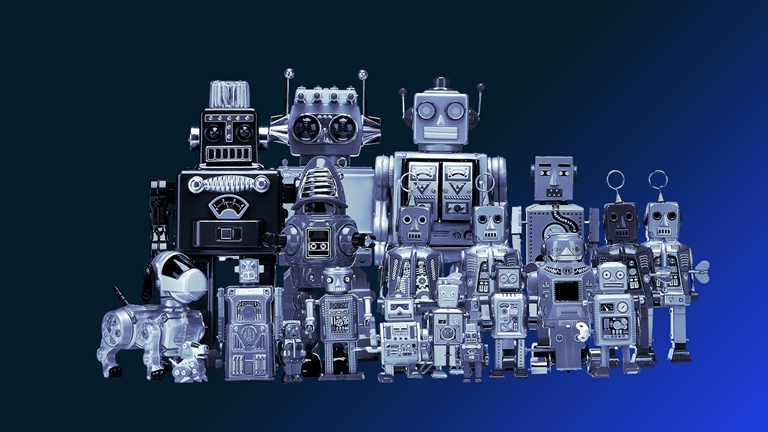
McKinsey Themes
Browse our essential reading on the topics that matter.
Get up to speed
McKinsey Explainers
Find direct answers to complex questions, backed by McKinsey’s expert insights.
Learn more
McKinsey on Books
Explore this month’s best-selling business books prepared exclusively for McKinsey Publishing by Circana.
See the lists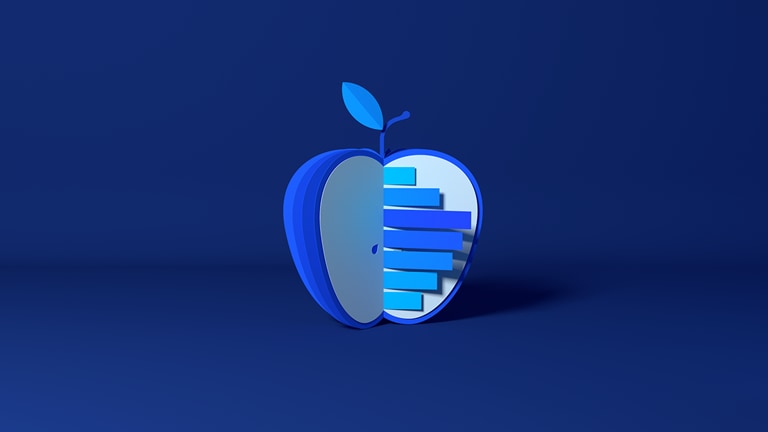
McKinsey Chart of the Day
See our daily chart that helps explain a changing world—as we strive for sustainable, inclusive growth.
Dive in
McKinsey Classics
Disruptive times call for transformational leaders with a knack for addressing complex problems. Read our 2018 classic “Leading with inner agility” to learn more.
Rewind
Only McKinsey
Delivering actionable insights on the day’s news, as only McKinsey can.
Subscribe now— Edited by Eleni Kostopoulos, managing editor, New York
Share these insights
Did you enjoy this newsletter? Forward it to colleagues and friends so they can subscribe too. Was this issue forwarded to you? Sign up for it and sample our 40+ other free email subscriptions here.
This email contains information about McKinsey's research, insights, services, or events. By opening our emails or clicking on links, you agree to our use of cookies and web tracking technology. For more information on how we use and protect your information, please review our privacy policy.
You received this email because you are a registered member of our Monthly Highlights newsletter.
Copyright © 2024 | McKinsey & Company, 3 World Trade Center, 175 Greenwich Street, New York, NY 10007
by "McKinsey Highlights" <publishing@email.mckinsey.com> - 11:51 - 2 Mar 2024 -
EP101: Top 3 Things You Should Know About Webhooks
EP101: Top 3 Things You Should Know About Webhooks
This week’s system design refresher: Top 3 Things You Should Know About Webhooks (Youtube video) Cloud Load Balancer Cheat Sheet How do we manage sensitive data in a system? What does ACID mean? SPONSOR US Learn Streaming Data Fundamentals at Your Pace (Sponsored)͏ ͏ ͏ ͏ ͏ ͏ ͏ ͏ ͏ ͏ ͏ ͏ ͏ ͏ ͏ ͏ ͏ ͏ ͏ ͏ ͏ ͏ ͏ ͏ ͏ ͏ ͏ ͏ ͏ ͏ ͏ ͏ ͏ ͏ ͏ ͏ ͏ ͏ ͏ ͏ ͏ ͏ ͏ ͏ ͏ ͏ ͏ ͏ ͏ ͏ ͏ ͏ ͏ ͏ ͏ ͏ ͏ ͏ ͏ ͏ ͏ ͏ ͏ ͏ ͏ ͏ ͏ ͏ ͏ ͏ ͏ ͏ ͏ ͏ ͏ ͏ ͏ ͏ ͏ ͏ ͏ ͏ ͏ ͏ ͏ ͏ ͏ ͏ ͏ ͏ ͏ ͏ ͏ ͏ ͏ ͏ ͏ ͏ ͏ ͏ ͏ ͏ ͏ ͏ ͏ ͏ ͏ ͏ ͏ ͏ ͏ ͏ ͏ ͏ ͏ ͏ ͏ ͏ ͏ ͏ ͏ ͏ ͏ ͏ ͏ ͏ ͏ ͏ ͏ ͏ ͏ ͏ ͏ ͏ ͏ ͏ ͏ ͏ ͏ ͏ ͏ ͏ ͏ ͏ ͏ ͏ ͏ ͏ ͏ ͏ ͏ ͏ ͏ ͏ ͏ ͏ ͏ ͏ ͏ ͏ ͏ ͏ ͏ ͏ ͏ ͏ ͏ ͏ ͏ ͏ ͏ ͏ ͏ ͏ ͏ ͏ ͏ ͏ ͏ ͏ ͏ ͏ ͏ ͏ ͏ ͏ ͏ ͏ ͏ ͏ ͏ ͏ ͏ ͏ ͏ ͏ ͏ ͏ ͏ ͏ Forwarded this email? Subscribe here for moreThis week’s system design refresher:
Top 3 Things You Should Know About Webhooks (Youtube video)
Cloud Load Balancer Cheat Sheet
How do we manage sensitive data in a system?
What does ACID mean?
SPONSOR US
Learn Streaming Data Fundamentals at Your Pace (Sponsored)
There’s a great new way to learn the basics of streaming data — enroll in Redpanda University for free, online, self-paced training. Courses include as many as 8 lessons and end with a brief quiz.
Start with the Streaming Data Fundamentals course to get a solid foundation of streaming data knowledge. More advanced courses such as cluster management are available, too!
Top 3 Things You Should Know About Webhooks!
Cloud Load Balancer Cheat Sheet
Efficient load balancing is vital for optimizing the performance and availability of your applications in the cloud.
However, managing load balancers can be overwhelming, given the various types and configuration options available.
In today's multi-cloud landscape, mastering load balancing is essential to ensure seamless user experiences and maximize resource utilization, especially when orchestrating applications across multiple cloud providers. Having the right knowledge is key to overcoming these challenges and achieving consistent, reliable application delivery.
In selecting the appropriate load balancer type, it's essential to consider factors such as application traffic patterns, scalability requirements, and security considerations. By carefully evaluating your specific use case, you can make informed decisions that enhance your cloud infrastructure's efficiency and reliability.
This Cloud Load Balancer cheat sheet would help you in simplifying the decision-making process and helping you implement the most effective load balancing strategy for your cloud-based applications.
Over to you: What factors do you believe are most crucial in choosing the right load balancer type for your applications?Latest articles
If you’re not a paid subscriber, here’s what you missed this month.
To receive all the full articles and support ByteByteGo, consider subscribing:
How do we manage sensitive data in a system?
The cheat sheet below shows a list of guidelines.
What is Sensitive Data?
Personal Identifiable Information (PII), health information, intellectual property, financial information, education and legal records are all sensitive data.
Most countries have laws and regulations that require the protection of sensitive data. For example, the General Data Protection Regulation (GDPR) in the European Union sets stringent rules for data protection and privacy. Non-compliance with such regulations can result in hefty fines, legal actions, and sanctions against the violating entity.
When we design systems, we need to design for data protection.Encryption & Key Management
The data transmission needs to be encrypted using SSL. Passwords shouldn’t be stored in plain text.
For key storage, we design different roles including password applicant, password manager and auditor, all holding one piece of the key. We will need all three keys to open a lock.Data Desensitization
Data desensitization, also known as data anonymization or data sanitization, refers to the process of removing or modifying personal information from a dataset so that individuals cannot be readily identified. This practice is crucial in protecting individuals' privacy and ensuring compliance with data protection laws and regulations. Data desensitization is often used when sharing data externally, such as for research or statistical analysis, or even internally within an organization, to limit access to sensitive information.
Algorithms like GCM store cipher data and keys separately so that hackers are not able to decipher the user data.Minimal Data Permissions
To protect sensitive data, we should grant minimal permissions to the users. Often we design Role-Based Access Control (RBAC) to restrict access to authorized users based on their roles within an organization. It is a widely used access control mechanism that simplifies the management of user permissions, ensuring that users have access to only the information and resources necessary for their roles.Data Lifecycle Management
When we develop data products like reports or data feeds, we need to design a process to maintain data quality. Data developers should be granted with necessary permissions during development. After the data is online, they should be revoked from the data access.
What does ACID mean?
The diagram below explains what ACID means in the context of a database transaction.
Atomicity
The writes in a transaction are executed all at once and cannot be broken into smaller parts. If there are faults when executing the transaction, the writes in the transaction are rolled back.
So atomicity means “all or nothing”.Consistency
Unlike “consistency” in CAP theorem, which means every read receives the most recent write or an error, here consistency means preserving database invariants. Any data written by a transaction must be valid according to all defined rules and maintain the database in a good state.Isolation
When there are concurrent writes from two different transactions, the two transactions are isolated from each other. The most strict isolation is “serializability”, where each transaction acts like it is the only transaction running in the database. However, this is hard to implement in reality, so we often adopt loser isolation level.Durability
Data is persisted after a transaction is committed even in a system failure. In a distributed system, this means the data is replicated to some other nodes.
SPONSOR US
Get your product in front of more than 500,000 tech professionals.
Our newsletter puts your products and services directly in front of an audience that matters - hundreds of thousands of engineering leaders and senior engineers - who have influence over significant tech decisions and big purchases.
Space Fills Up Fast - Reserve Today
Ad spots typically sell out about 4 weeks in advance. To ensure your ad reaches this influential audience, reserve your space now by emailing hi@bytebytego.com
Like
Comment
Restack
© 2024 ByteByteGo
548 Market Street PMB 72296, San Francisco, CA 94104
Unsubscribe
by "ByteByteGo" <bytebytego@substack.com> - 11:36 - 2 Mar 2024 -
SEO Packages and price list
Hi,
Hope you are doing well.
I can help your website to get on the 1st page of Google..
If you are interested then kindly share these details with us:-
1 Your website/URL
2 Your target area/location
3 Keywords
Let me know if you are interested, I will send you our SEO Packages and price list
Thanks & RegardsAshu
Whats app & call: - +91 8920389159
by "Ashu" <Ashu.kumar012@outlook.com> - 06:49 - 1 Mar 2024 -
The best workplace rituals can help people find meaning
On Point
Moving beyond “me” to “we” Brought to you by Liz Hilton Segel, chief client officer and managing partner, global industry practices, & Homayoun Hatami, managing partner, global client capabilities
•
A lost art? Workplace rituals can bring colleagues together, helping people move beyond “me” to “we,” McKinsey partner Bryan Hancock and senior partner emeritus Bill Schaninger share in an episode of the McKinsey Talks Talent podcast. The pandemic paused many such rituals, to the extent that the youngest cohort in the workforce might not be familiar with them. Rituals can be milestones to celebrate important events, such as making partner or clinching a deal, but they are not limited to major accomplishments. During a routine meeting, colleagues can share cool projects they have worked on that week, helping everyone (particularly younger colleagues) get a feel for the breadth of their work.
— Edited by Jana Zabkova, senior editor, New York
This email contains information about McKinsey's research, insights, services, or events. By opening our emails or clicking on links, you agree to our use of cookies and web tracking technology. For more information on how we use and protect your information, please review our privacy policy.
You received this newsletter because you subscribed to the Only McKinsey newsletter, formerly called On Point.
Copyright © 2024 | McKinsey & Company, 3 World Trade Center, 175 Greenwich Street, New York, NY 10007
by "Only McKinsey" <publishing@email.mckinsey.com> - 01:42 - 1 Mar 2024 -
Advanced Driver Assistance System - Drive your Fleets Smarter, and Safer
Advanced Driver Assistance System - Drive your Fleets Smarter, and Safer
Your Gateway to Safer Roads and Higher Profits System (ADAS)
Impact of nor having and having an ADAS on your Fleet Safety

Uffizio Technologies Pvt. Ltd., 4th Floor, Metropolis, Opp. S.T Workshop, Valsad, Gujarat, 396001, India
by "Sunny Thakur" <sunny.thakur@uffizio.com> - 07:00 - 29 Feb 2024 -
How Video Recommendations Work - Part 1
How Video Recommendations Work - Part 1
The digital landscape has seen dramatic changes in how information is retrieved, moving from simple web portals to complex recommendation systems. This shift has been driven by the rapid increase of online content and the growing demand for personalized, relevant experiences. Let’s dive into the four pivotal stages for this evolution.͏ ͏ ͏ ͏ ͏ ͏ ͏ ͏ ͏ ͏ ͏ ͏ ͏ ͏ ͏ ͏ ͏ ͏ ͏ ͏ ͏ ͏ ͏ ͏ ͏ ͏ ͏ ͏ ͏ ͏ ͏ ͏ ͏ ͏ ͏ ͏ ͏ ͏ ͏ ͏ ͏ ͏ ͏ ͏ ͏ ͏ ͏ ͏ ͏ ͏ ͏ ͏ ͏ ͏ ͏ ͏ ͏ ͏ ͏ ͏ ͏ ͏ ͏ ͏ ͏ ͏ ͏ ͏ ͏ ͏ ͏ ͏ ͏ ͏ ͏ ͏ ͏ ͏ ͏ ͏ ͏ ͏ ͏ ͏ ͏ ͏ ͏ ͏ ͏ ͏ ͏ ͏ ͏ ͏ ͏ ͏ ͏ ͏ ͏ ͏ ͏ ͏ ͏ ͏ ͏ ͏ ͏ ͏ ͏ ͏ ͏ ͏ ͏ ͏ ͏ ͏ ͏ ͏ ͏ ͏ ͏ ͏ ͏ ͏ ͏ ͏ ͏ ͏ ͏ ͏ ͏ ͏ ͏ ͏ ͏ ͏ ͏ ͏ ͏ ͏ ͏ ͏ ͏ ͏ ͏ ͏ ͏ ͏ ͏ ͏ ͏ ͏ ͏ ͏ ͏ ͏ ͏ ͏ ͏ ͏ ͏ ͏ ͏ ͏ ͏ ͏ ͏ ͏ ͏ ͏ ͏ ͏ ͏ ͏ ͏ ͏ ͏ ͏ ͏ ͏ ͏ ͏ ͏ ͏ ͏ ͏ ͏ ͏ ͏ ͏ ͏ ͏ ͏ ͏ ͏ ͏ ͏ ͏ ͏ ͏ Forwarded this email? Subscribe here for moreLatest articles
If you’re not a subscriber, here’s what you missed this month.
To receive all the full articles and support ByteByteGo, consider subscribing:
The digital landscape has seen dramatic changes in how information is retrieved, moving from simple web portals to complex recommendation systems. This shift has been driven by the rapid increase of online content and the growing demand for personalized, relevant experiences. Let’s dive into the four pivotal stages for this evolution.
In the mid-1990s, search engines like Yahoo! were rudimentary, focusing on text-based searches with basic algorithms for indexing web pages. The search results were ranked based on keyword matches without considering the user’s context or personal preferences. This phase was about cataloging the burgeoning web content as the internet started its exponential growth.
Enter Google with its PageRank algorithm, revolutionizing search by evaluating not just keyword relevance but also the quality and quantity of page links. This significantly improved the relevance and quality of search results, marking a leap forward in information retrieval.
As the internet grew, search engines started to incorporate more nuanced data, including users’ search histories, locations, and devices, to refine search results. This period also introduced diverse content types – images, videos, and news – directly into search results, making the experience more personal and comprehensive. However, this increased personalization also sparked privacy and data protection concerns.
Today, we’re in an era dominated by AI and machine learning, powering recommendation systems that suggest content not based on explicit queries but on users’ past behaviors, preferences, and interactions. Giants like YouTube, Netflix, and Amazon rely on these systems to enhance engagement and drive sales.
Recommendation systems represent a significant shift from user-initiated information retrieval to active content curation. In the past, there wasn’t so much content online, and users could easily discover content through keyword-based searches. Now, with the internet’s vast expanses of data, platforms compete for users’ attention, and recommendation systems play a crucial role in filtering and presenting personalized content. It’s often quipped that these systems know us better than we know ourselves.
In this issue, we’ll explore the inner workings of recommendation systems and their pivotal role in driving a company’s revenue. Stay tuned as we uncover the secrets behind how YouTube and other platforms tailor content to captivate and engage their audiences.
1 Why Do We Need Recommendation Systems?
Recommendation systems are everywhere these days. Whether shopping on Amazon, binge-watching on YouTube or scrolling through TikTok, these systems curate content specifically for us, potentially leading to hours of engagement. But why are these systems so crucial, especially for platforms like YouTube?
At the heart of platforms like YouTube is a dynamic ecosystem involving content creators, viewers, and advertisers. Content creators produce videos, viewers consume this content, and advertisers aim to capture viewers’ attention. Recommendation systems play a pivotal role in enhancing this ecosystem, attracting more creators, viewers, and advertisers.
The diagram below shows the effects of a recommendation system on the YouTube platform.
Without recommendation systems, viewers would have to sift through content to find what interests them, while advertisers manually searched for their ideal audience. This made discovery cumbersome and less effective, with many views and advertisers missing out on potentially perfect matches.
Smart recommendation systems transform the experience by leveraging algorithms that analyze various data points – view history, user profiles, trending topics, and recommendations from friends – to personalize content for viewers. This tailored approach means viewers are more likely to engage deeply with content, encouraging creators to produce more and advertisers to invest more, thanks to better targeting and higher conversion rates.
Consider an e-commerce giant like Amazon, where recommendation systems personalize product suggestions. Even a 1% improvement in their recommendation accuracy can translate into tens of millions in sales revenue daily. This massive impact underscores why major companies continually invest in enhancing their recommendation algorithms and models.
The investment in recommendation systems isn't just about boosting sales or viewer numbers; it's about enriching user experiences and fostering user retention. These systems are designed to understand and anticipate user preferences which create a more engaging and personalized online experience.
2 How Does a Recommendation System Select For Us?
Now that we understand the role of a recommendation system in enhancing a business’s ecosystem, let’s dive deeper into how these systems curate content for us.
At the heart of a recommendation system is a deep-learning model designed to predict user preferences for specific videos. This involves scoring and ranking videos, integrating advertisements, and generating the final set of recommendations. Unlike simpler models, a deep learning-based system can more accurately mimic the complex process of human decision-making for content selection.
To train the model to predict user preferences accurately, it’s essential to analyze data from three key sources:
Videos: Considering the vast size of video data, the model leverages various attributes such as video descriptions, tags, actual content, and viewer impressions to derive video features.
Users: Understanding user preferences is crucial. This is achieved by analyzing static data, like user profiles, and dynamic data, including interaction patterns like clicks and social network interactions.
Context: Contextual factors, such as location and time, deeply impact content preferences. The model considers these elements to fine-tune its suggestions.
Keep reading with a 7-day free trial
Subscribe to ByteByteGo Newsletter to keep reading this post and get 7 days of free access to the full post archives.
A subscription gets you:
An extra deep dive on Thursdays Full archive Many expense it with team's learning budget Like
Comment
Restack
© 2024 ByteByteGo
548 Market Street PMB 72296, San Francisco, CA 94104
Unsubscribe
by "ByteByteGo" <bytebytego@substack.com> - 11:41 - 29 Feb 2024 -
✨LEAP 2024: 2 hours until the event starts!
✨LEAP 2024: 2 hours until the event starts!
There's still time to sign up for an immersive experience in API observability!Hi Md Abul,
JUST 2 HOURS TO GO! Today's the day to seize the moment and join us at LEAP 2024: The API observability conference - a virtual event set to transform your skills from basic to expert in just one day.
There's still time to register for free here:
Here's what's in store:
🌟 Connect with industry leaders and experts from Miro, Dynatrace, ServiceNow, Dash0, Checkly, Tracetest, and more.
🌟 20+ speakers delivering insightful sessions to support attendees in transforming their API observability skills from basic to extraordinary.
🌟 Designed for API platform teams like yours, focusing on revolutionising your approach to platform team operations and API observability strategies.
🌟 Two tracks tailored for both decision-makers and implementers, ensuring you get the insights you need to excel in your role.
🌟 By joining us at LEAP 2024, you'll be one of the first to earn the API observability fundamentals certification.
The important bits:
Thurs
29
FebTime
9am - 4pm ET
2pm - 9pm GMTVirtual
Zoom
eventThis is THE day to elevate your API observability skills from basic to expert level!
See you at LEAP 2024!
Budha and team
Tyk, 87a Worship Street, London, City of London EC2A 2BE, United Kingdom, +44 (0)20 3409 1911
by "Budhaditya Bhattacharya" <communities@tyk.io> - 07:12 - 29 Feb 2024 -
Slice of Success: How Domino’s UK and Ireland increased SLO compliance, and customer satisfaction
New Relic
 February 2024
February 2024Domino's UK and Ireland runs on New Relic to deliver pizzas quicker Domino’s senior engineering manager discusses how Domino's runs vital observability and monitoring competencies across its SRE function with New Relic, including monitoring golden signals and tracking its most important customer journeys.
Learn more  Live archives helps you easily meet regulatory compliance requirements using a unique storage capability that stores log data for up to seven years in an active, hydrated, and enriched state, so that you can analyze historical logs faster and easier.
Live archives helps you easily meet regulatory compliance requirements using a unique storage capability that stores log data for up to seven years in an active, hydrated, and enriched state, so that you can analyze historical logs faster and easier.
Useful reads Discover how Dustin leverages New Relic for a seamless DevSecOps transition post-merger, optimizing tech stacks and enhancing security. Dive into their success story!
Discover how Dustin leverages New Relic for a seamless DevSecOps transition post-merger, optimizing tech stacks and enhancing security. Dive into their success story!
Upcoming Events Kubecon 19-22th March, Paris
Kubecon 19-22th March, Paris
Don't miss our exciting presence at KubeCon/ CloudNativeCon in Paris! Engage with us for a chance to win a Meta Quest 3 and grab some seriously cool swag. Join New Relic at booth F29. Mark your calendars for Observability Day on March 19th, where we'll dive deep into the superpower of observability.
EMEA - New Relic user meetups are back!
Join New Relic and other local users at our upcoming meetups in Dubai, Stockholm, Munich, Madrid, Dublin, London, Manchester, Berlin & Warsaw for food, drinks, swag & more! Discover what’s new in observability and learn best practices in log data - parsing and obfuscation, converting events-to-metrics, and managing SLOs & SLIs. Bring your a-game to compete in our version of Flappy Birds with prizes aplenty!
New Relic End-of-Life Updates
PHP Frameworks, Libraries, and Language Versions (March 1, 2024)
The PHP community have deprecated the following frameworks and libraries:
- CakePHP 2.x: End of lifed by CakePHP in June 2021
- CodeIgniter 2.x: End of lifed by CodeIgnitred in 2015
- Drupal 6.0: End of lifed by Drupal in 2016
- Guzzle library versions 3 and 4: End of lifed by Guzzle in 2015 and 2018 respectively
- Magento 1.x: End of lifed by Magento in December 2020
- PHPUnit library versions 3, 4, 5, 6, 7
- Symfony 3.x: End of lifed by Symfony in November 2021
- Yii 1.0: End of lifed by Yii in 2010
- Zend framework 1.x, 2.x: End of lifed by Zend in 2016 and 2018 respectively
- We are ending support for PHP versions 7.0 and 7.1, which the PHP community deprecated three years ago.
- As a result, we can no longer provide support if you use these versions.
- We recommend you update any EOL’d versions to supported versions. We strongly recommend customers update to PHP version 8.2.
- Please see here for more information.
Platform Support for Legacy UI Experiences (March 1, 2024)
- Some pages in one.newrelic.com use legacy design and code. We are officially migrating these pages to match the rest of the UI.
- No action is needed from you. The experiences still using legacy code will be automatically updated and replaced.
- Please see here for more information.
Need help? Let's get in touch.



This email is sent from an account used for sending messages only. Please do not reply to this email to contact us—we will not get your response.
This email was sent to info@learn.odoo.com Update your email preferences.
For information about our privacy practices, see our Privacy Policy.
Need to contact New Relic? You can chat or call us at +44 20 3859 9190.
Strand Bridge House, 138-142 Strand, London WC2R 1HH
© 2024 New Relic, Inc. All rights reserved. New Relic logo are trademarks of New Relic, Inc

by "New Relic" <emeamaketing@newrelic.com> - 06:06 - 29 Feb 2024 -
What would it take for Black US residents to achieve racial parity?
On Point
See the surprising data Brought to you by Liz Hilton Segel, chief client officer and managing partner, global industry practices, & Homayoun Hatami, managing partner, global client capabilities
•
Racial-parity improvement? Despite some progress toward racial parity for Black Americans, large disparities with their White counterparts persist. “There is nowhere in the US where outcomes for Black residents equal those of their White neighbors,” McKinsey senior partner Shelley Stewart and coauthors share. Across seven community profiles, they analyzed residents’ aspirations, including basic standard of living, financial stability, and stable and secure homes. The report reveals that the greatest overall outcomes and Black residential parity exist within the nation’s suburbs and exurbs; however, less than 12% of Black Americans live in these areas.
— Edited by Vanessa Burke, editor, Atlanta
This email contains information about McKinsey's research, insights, services, or events. By opening our emails or clicking on links, you agree to our use of cookies and web tracking technology. For more information on how we use and protect your information, please review our privacy policy.
You received this newsletter because you subscribed to the Only McKinsey newsletter, formerly called On Point.
Copyright © 2024 | McKinsey & Company, 3 World Trade Center, 175 Greenwich Street, New York, NY 10007
by "Only McKinsey" <publishing@email.mckinsey.com> - 01:28 - 29 Feb 2024 -
👀 This month at Remote: Explore if async work is the future. Check out HRIS updates and don't miss our live events and webinars.
👀 This month at Remote: Explore if async work is the future. Check out HRIS updates and don't miss our live events and webinars.
Your monthly global update is here from Remote. Dive in to see the latest.
 February
2024
February
2024

Featured news
Celebrating and exploring asynchronous work
This month, we're celebrating asynchronous work at Remote. Our entire team, which now consists of over 1,400 members, operates without offices or a centralized timezone. Over the last 5 years we've learned quite a bit about effective asynchronous work on a large scale. In fact, our CEO Job has just launched a free masterclass on the subject!
"Async Power Hour" Webinar
We're also hosting our first ever "Async Power Hour" webinar. This event will provide insights into how Remote manages a global team within an asynchronous work culture. We're not just throwing around buzzwords; we're sharing real insights and practical advice on building an asynchronous culture and hiring the right team. Our CEO and managers will discuss the day-to-day operations of an asynchronous team and explain why it’s a game changer for success.
Read: Why should you be working asynchronously?
Read this blog post from our President and Co-Founder Marcelo Lebre as he explores the transformative power of asynchronous work, highlighting its efficiency for global teams and boosting productivity without the constraints of synchronized schedules.

New feature announcement
What’s new with Remote global HR?
Since launching Remote’s HRIS last September, we’ve made some BIG improvements — and we’re just getting started!

Events
We have a bunch of in-person events that you can catch the Remote team at around the world. If you have some burning questions that you'd love to ask in real life, or wanna just come say hi, our team would love to see you!
Remote is coming to #SXSW 2024!
📍 Austin, USA
Find us In the Creative Industries Expo at booth number 413.📍Las Vegas, USA
Transform is coming! And Remote is sponsoring! So if you’re in Las Vegas don’t miss the chance to stop by booth 117.National HR Summit: 20-21 March, 2024
📍Sydney, Australia
Join us at the workshop Stage workshop on addressing Australia's labor and talent shortages led by Eli Chuah, Remote's Solutions Consultant. She will delve into innovative strategies and practical solutions.
Featured webinar
Are you a UK-based startup hiring talent outside the country?
March 5th, 9am - 10am TUC
Join us for an insightful webinar: Learn the “how” and “why” of building your international team from Remote’s Chief People Officer Barbara Matthews and SeedLegals Founder Anthony Rose.
Feeling buried in irrelevant job applications?
95% of surveyed employers do too! Remote Talent's ad-free platform connects you with the right talent, cutting through the noise of traditional job boards.
.png?height=64&upscale=true&name=Youtube%20(5).png)

.png?height=64&upscale=true&name=twitter%20(4).png)
.png?height=64&upscale=true&name=instagram%20(1).png)
You received this email because you are subscribed to News & Offers from Remote Europe Holding B.V
Update your email preferences to choose the types of emails you receive.
Unsubscribe from all future emailsRemote Europe Holding B.V
Copyright © 2024 Remote Europe Holding B.V All rights reserved.
Kraijenhoffstraat 137A 1018RG Amsterdam The Netherlands
by "Remote" <hello@remote-comms.com> - 11:47 - 28 Feb 2024 -
🔭 Why is everyone talking about observability?
🔭 Why is everyone talking about observability?
Unravel the mysteries of observability and find out why it's the hottest topic in tech!Got your ears perked for the latest tech talk? Well, you're in for a treat because we're diving headfirst into the world of observability – and trust us, it's more than just a buzzword.
In short, well-implemented API observability can deliver:
- Faster issue responses: Swiftly address API issues with monitoring
- Quick value delivery: Expedite value delivery through troubleshooting
- Enhanced quality: Improve user experiences with higher-quality APIs
- Deeper understanding: Gain insights to optimise API ecosystems.
Embracing observability isn't just about keeping pace - it's about driving tangible business value by supercharging operations, boosting performance, and staying ahead of the competition.
And hey, speaking of staying ahead, have you heard about LEAP 2024? It's our API observability conference happening TOMORROW (Feb 29). Keep scrolling to sign up, and explore all the other (mostly) observability resources we have on offer.
P.S. Want to hear more from Tyk? Subscribe to our newsletter here.

Tyk in the limelight
LEAP 2024: The API observability conference
Are you ready to transform your API observability skills? This one-day event promises to revolutionise the way you approach platform team operations and observability strategies. Oh, and we should add that by attending LEAP, you'll unlock exclusive access to the API observability fundamentals certification.
Sign up here.We're going to KubeCon!
Get in the car (or train, or plane), we're going to Kubecon! Join us at booth L14 see how our solutions can elevate your platform maturity. And, make sure you join our session: Exploring OAuth2 Token Exchange for microservice API security - Wednesday, 20th March - 11:15 - 11:50. À bientôt!

The resource hub
New blogs on the block
Everyone's talking about observability
Observability is a hot topic right now – and it’s about to get even hotter. Future Market Insights predicts the observability platform market will more than double in size by 2032, growing from a value of US$2,173.7 million in 2022 to US$5,553.2 million a decade later. So, why is everyone so excited?
The business value of observability
Observability, especially distributed tracing, transforms API monitoring and troubleshooting. Beyond that, it offers valuable insights for maintaining control, security, and compliance in an organisation's API ecosystem. Here, we delve into the business benefits of observability for API teams. Read more.
How to improve API observability
Getting API observability right underpins API-led growth. It can identify opportunities for revenue, support better decision-making and reduce operational overheads by creating more efficient working practices, particularly when it comes to open standards. Find out more.

Tyk events
Want to be the first to hear about our events? Sign up here to stay in the loop.
We also have a PLETHORA of webinars on all sorts of API-related topics you can crack into and watch on-demand here.
Go on, you know you want to check them out!
Why did the developer bring a telescope to the API party?
Because they wanted to ensure top-notch API observability and keep a close eye on those endpoints!Disclaimer: The author assumes no responsibility for the quality of this joke. This specific content is provided with no guarantees of laughter, entertainment, or any ounce of usefulness.
Tyk, 87a Worship Street, London, City of London EC2A 2BE, United Kingdom, +44 (0)20 3409 1911
by "Budhaditya Bhattacharya" <communities@tyk.io> - 01:04 - 28 Feb 2024 -
How are higher costs affecting US consumers?
On Point
5 strategies for consumer brands Brought to you by Liz Hilton Segel, chief client officer and managing partner, global industry practices, & Homayoun Hatami, managing partner, global client capabilities
•
Choosier consumers. US consumers are becoming choosier despite a relatively strong economy and low unemployment, McKinsey senior partner Warren Teichner and coauthors reveal. Although Americans are shopping as frequently—if not more often—as they were a year ago, they are buying fewer items on each trip. Between 2022 and 2023, units per trip declined by 3 to 5% across the grocery, health and beauty, and household categories.
— Edited by Belinda Yu, editor, Atlanta
This email contains information about McKinsey's research, insights, services, or events. By opening our emails or clicking on links, you agree to our use of cookies and web tracking technology. For more information on how we use and protect your information, please review our privacy policy.
You received this newsletter because you subscribed to the Only McKinsey newsletter, formerly called On Point.
Copyright © 2024 | McKinsey & Company, 3 World Trade Center, 175 Greenwich Street, New York, NY 10007
by "Only McKinsey" <publishing@email.mckinsey.com> - 01:53 - 28 Feb 2024

